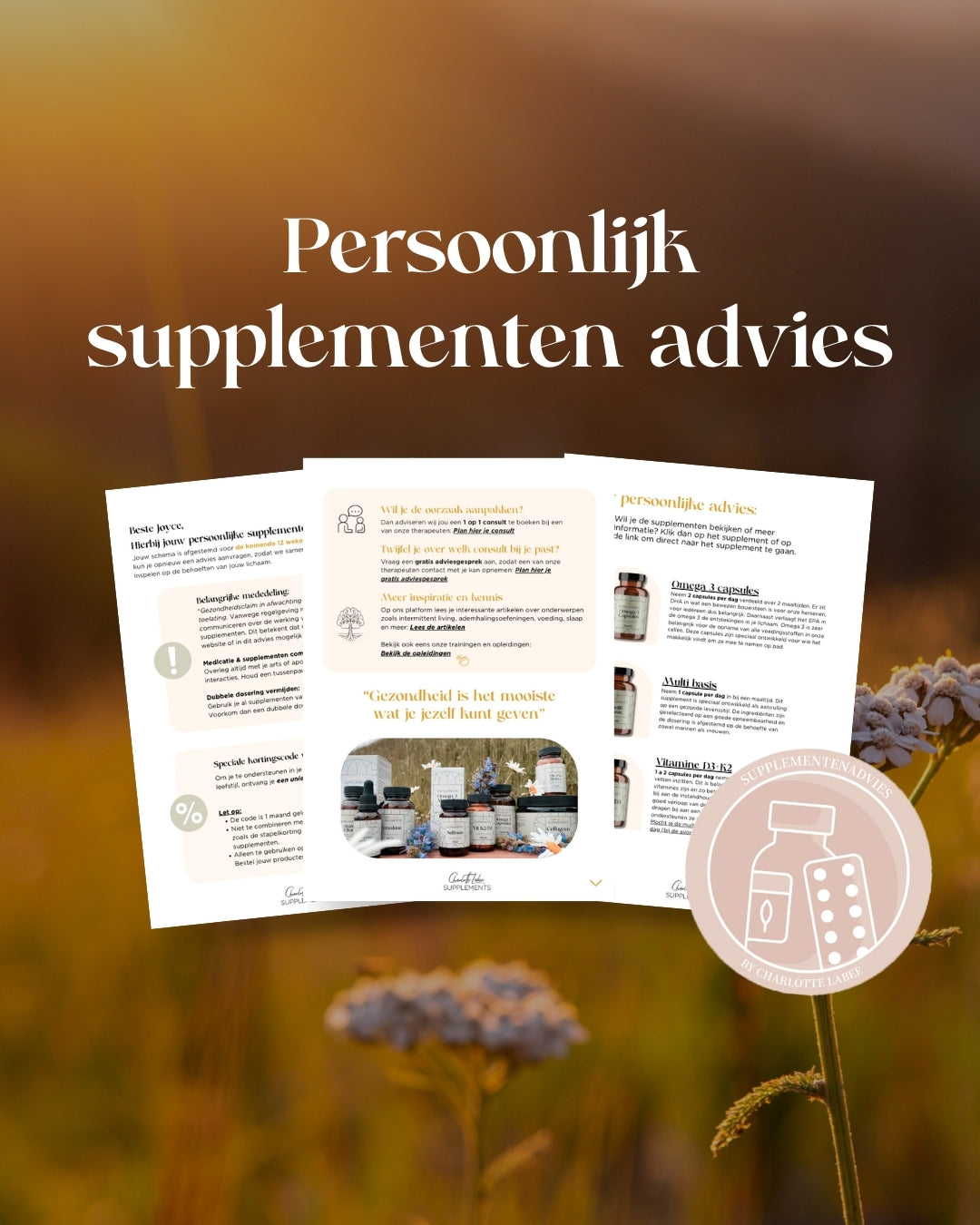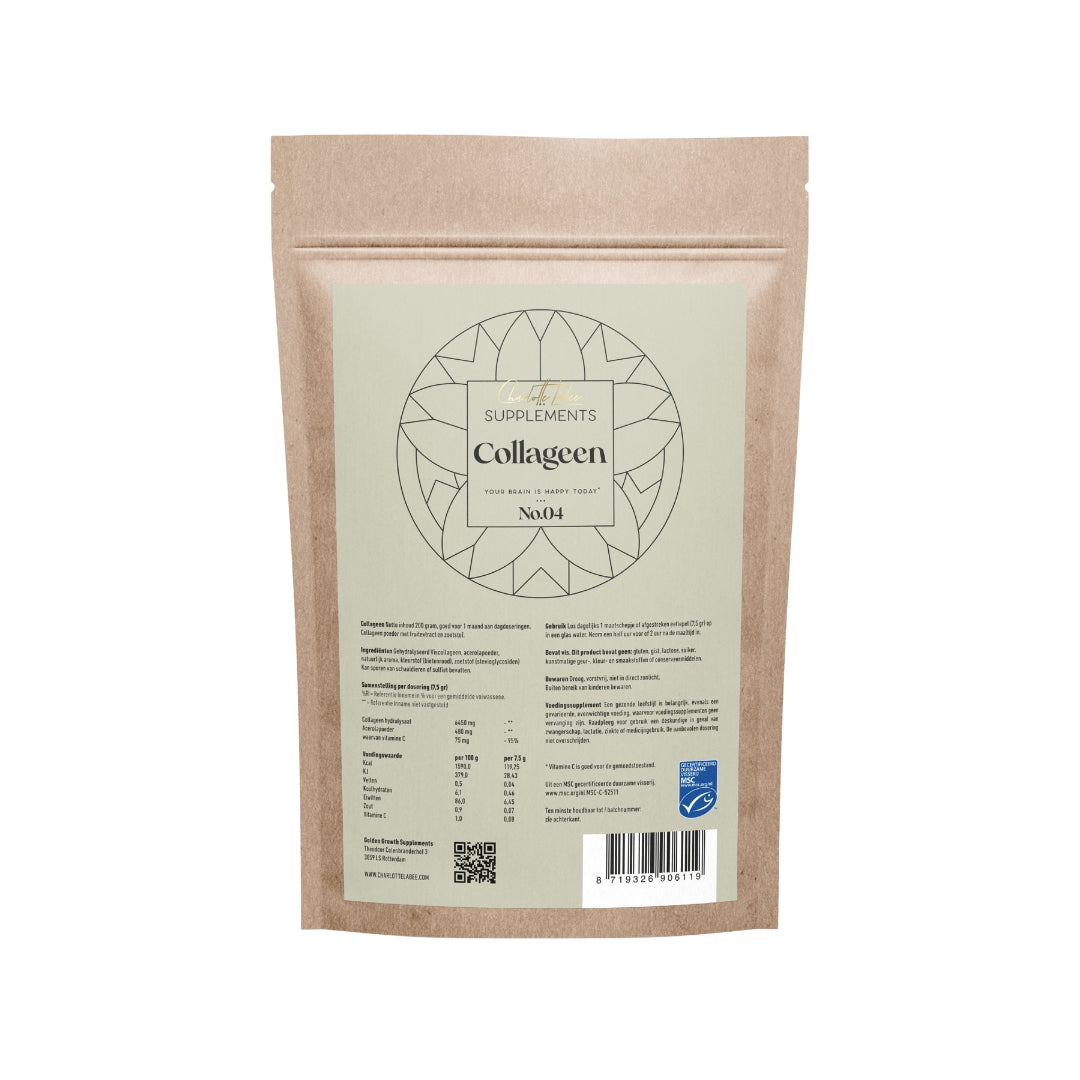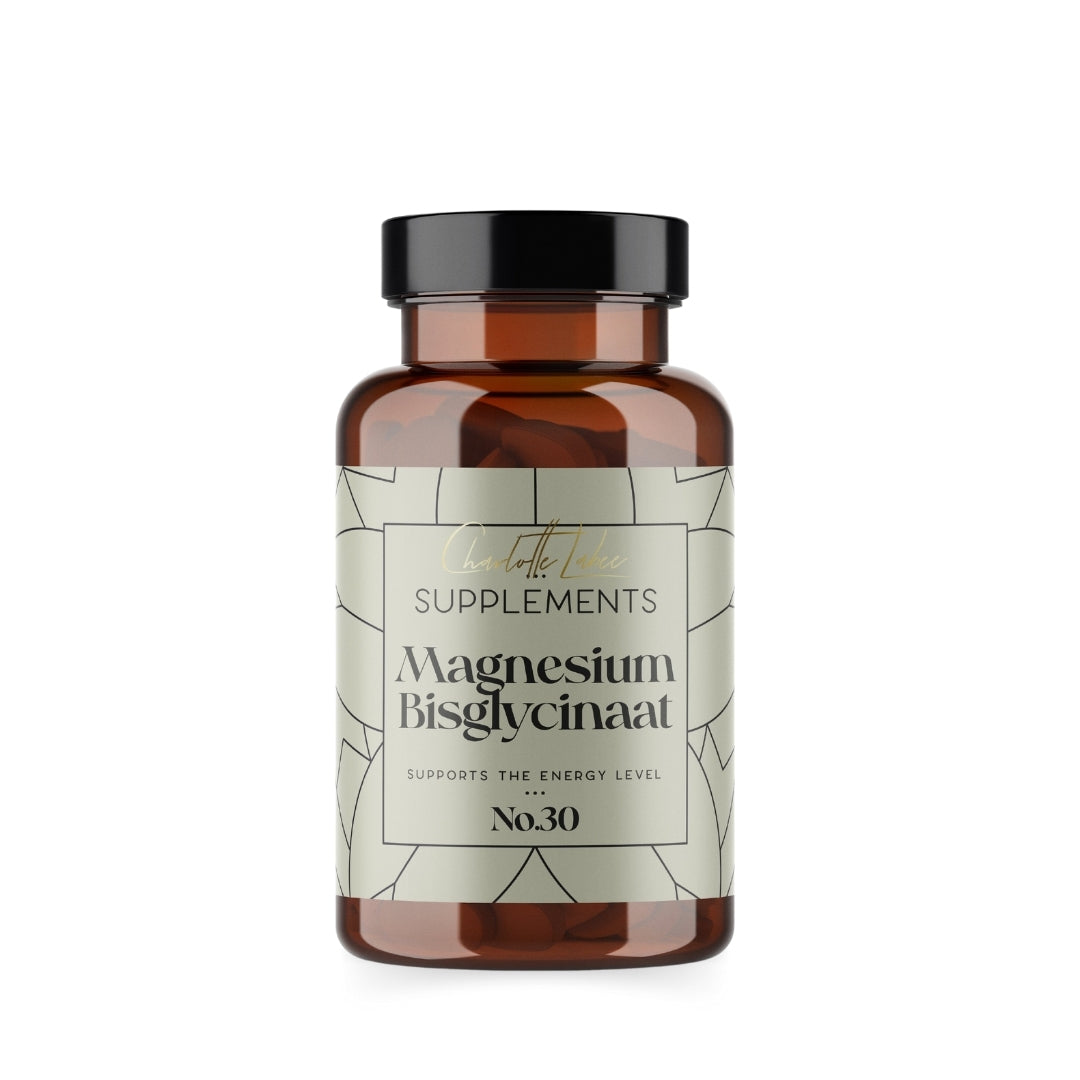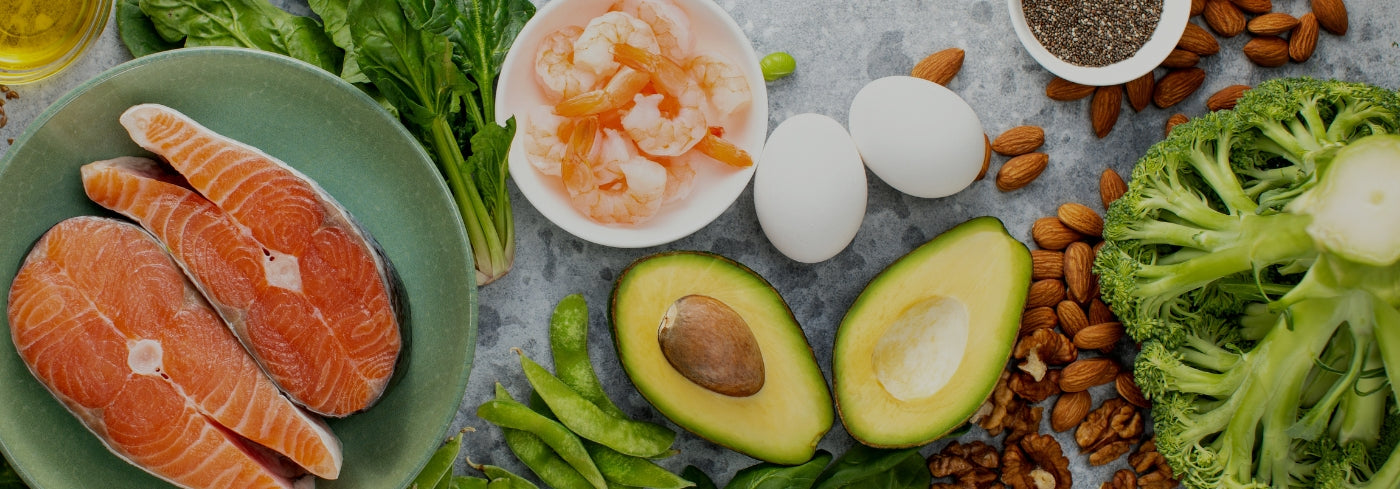In de wereld van voeding en gezondheid duikt één term steeds weer op: omega 3. Deze essentiële vetzuren staan bekend om hun talloze voordelen voor ons lichaam en brein. Maar waarom is omega 3 zo belangrijk? En hoe kun je ervoor zorgen dat je voldoende binnenkrijgt? In deze blog duiken we dieper in op de kracht van omega 3.
Wat is omega 3?
Omega 3 is een groep meervoudig onverzadigde vetzuren die een essentiële rol spelen in het functioneren van ons lichaam. Er zijn drie belangrijke typen omega 3-vetzuren:
- ALA (alfa-linoleenzuur): Dit vetzuur komt voornamelijk voor in plantaardige bronnen zoals lijnzaad, chiazaad en walnoten.
- EPA (eicosapentaeenzuur): Dit vetzuur vind je voornamelijk in vette vis zoals zalm, makreel en sardines.
- DHA (docosahexaeenzuur): DHA is vooral belangrijk voor de gezondheid van je hersenen en ogen en komt ook voor in vette vis en algen.
Hoewel ons lichaam ALA kan omzetten in EPA en DHA, is deze omzetting zeer beperkt. Daarom is het belangrijk om voldoende EPA en DHA uit voeding of supplementen te halen.
De belangrijkste voordelen van omega 3
Omega 3-vetzuren spelen een cruciale rol in verschillende lichaamsprocessen. Hier zijn een aantal belangrijke voordelen:
- Ondersteuning van het hart: Omega 3-vetzuren dragen bij aan het behoud van een gezond hart. Ze ondersteunen een normaal hartritme en helpen de triglyceridenwaarden in het bloed op peil te houden.
- Gezondheid van de hersenen: DHA is een belangrijke bouwsteen van de hersenen. Het ondersteunt de normale hersenfunctie en draagt bij aan het behoud van cognitieve functies, zoals concentratie en geheugen.
- Gezonde ogen: DHA speelt ook een rol in het behoud van een normaal gezichtsvermogen. Het helpt de ogen scherp en gezond te houden.
- Ontstekingsremmende eigenschappen: Omega 3 staat bekend om zijn ontstekingsremmende eigenschappen.
Hoe zorg je voor voldoende omega 3?
Het kan een uitdaging zijn om voldoende omega 3 uit voeding alleen te halen, vooral als je geen grote fan bent van vis. Hier zijn enkele tips om je inname te verhogen:
- Eet minimaal drie keer per week vette vis: Denk aan zalm, makreel, haring of sardines. Deze vissen zijn rijk aan EPA en DHA. Het is dan wel belangrijk om te kiezen voor kwalitatieve, wild gevangen vis.
- Gebruik plantaardige bronnen: Lijnzaad, chiazaad en walnoten zijn goede bronnen van ALA. Hoewel de omzetting naar EPA en DHA beperkt is, dragen deze zaden wel bij aan je totale inname.
- Overweeg een supplement: Als je moeite hebt om voldoende omega 3 uit voeding te halen, kan een supplement een goede optie zijn.
Het belang van de balans tussen omega 3 en omega 6
Naast omega 3 is omega 6 een ander essentieel vetzuur. Omega 6 komt veel voor in plantaardige oliën en bewerkte voedingsmiddelen, wat betekent dat we er vaak te veel van binnenkrijgen. Een te hoge inname van omega 6 kan ontstekingsreacties in het lichaam bevorderen, terwijl omega 3 juist ontstekingen remt. Het is daarom belangrijk om de balans tussen omega 3 en omega 6 in de gaten te houden en ervoor te zorgen dat je voldoende omega 3 binnenkrijgt om deze balans te herstellen. De gewenste ratio omega 6/omega 3 ligt tussen de 4:1 en 2:1. Door onze westerse leefstijl ligt deze gemiddeld tussen de 10:1 en 20:1… we hebben dus meer omega 3 nodig!
Omega 3 voor de toekomst
De rol van omega 3 in onze gezondheid is enorm. Al vóór de geboorte is het belangrijk. Voordat een zwangerschap begint, is het belangrijk dat de omega 3 balans van mama in orde is. Tijdens de zwangerschap wordt er door de foetus veel gevraagd voor de ontwikkeling van de hersenen en ogen. Omega 3 speelt hier een belangrijke rol in. Daarna blijven deze vetzuren belangrijk voor jong én oud, voor het ondersteunen van een gezond hart tot het behouden van een scherpe geest. Het is duidelijk dat omega 3 niet mag ontbreken in een gezonde leefstijl.
Ben je benieuwd naar de beste manier om jouw omega 3-inname te verhogen? Neem dan eens een kijkje in ons Omega 3 assortiment. We bieden hoogwaardige supplementen die je helpen om jouw gezondheid optimaal te ondersteunen.
Zorg goed voor jezelf, begin vandaag nog met het ondersteunen van jouw gezondheid met omega 3!








